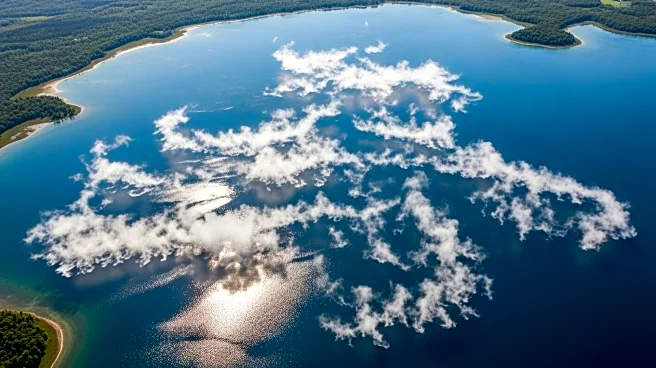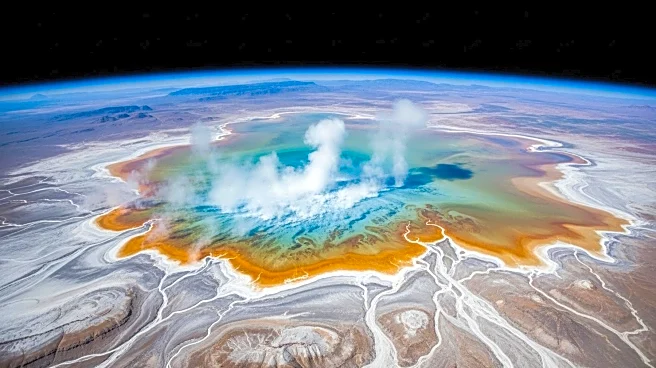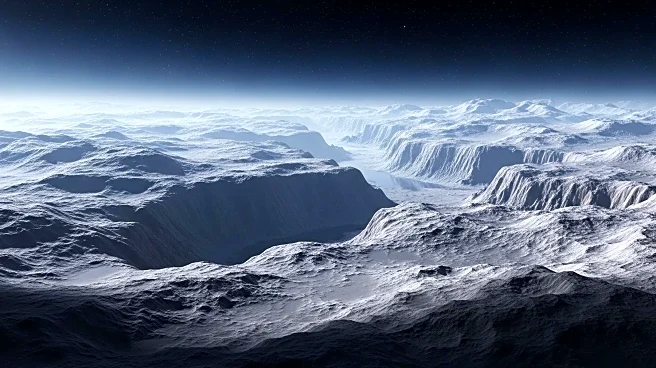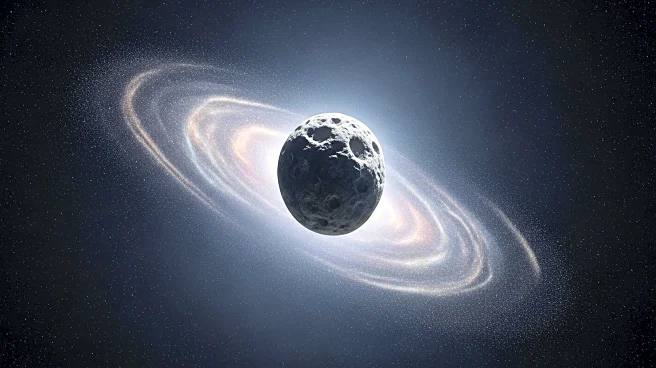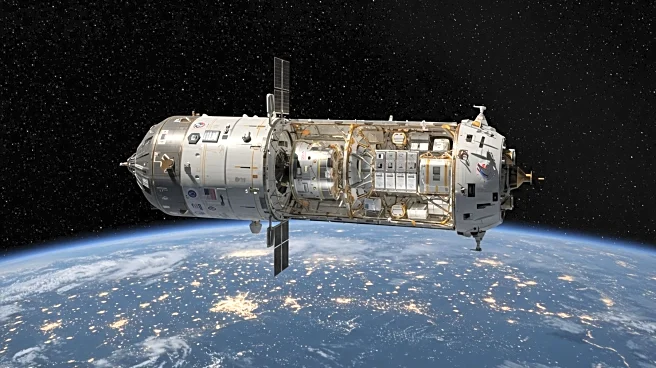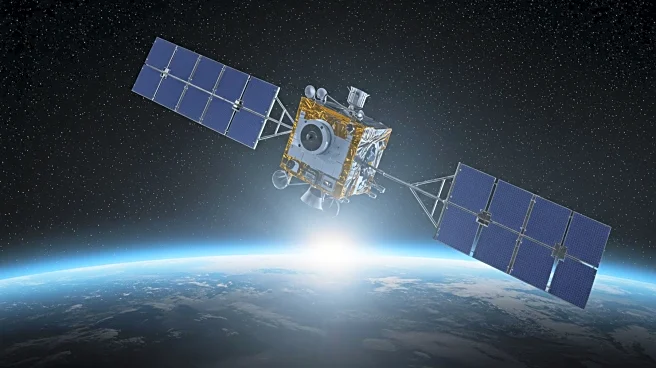What is the story about?
What's Happening?
NASA astronaut Kate Rubins captured stunning images of Lake Van in Turkey, showcasing rare milky swirls known as 'turbidity plumes.' These plumes consist mainly of calcium carbonate and detritus, appearing due to disturbances in the lake's shallow waters. Lake Van, the largest 'soda lake' on Earth, is highly alkaline with a pH of around 10. The lake's unique conditions, including high salt concentrations, prevent freezing even in cold temperatures.
Why It's Important?
The images of Lake Van provide valuable insights into natural phenomena and the environmental conditions of alkaline lakes. Understanding turbidity plumes and their formation can aid in ecological studies and the management of similar environments. The high salt concentration and unique microbialite structures in Lake Van offer opportunities for scientific research, potentially contributing to advancements in environmental science and climate studies.
Beyond the Headlines
Lake Van's fluctuating water levels over 600,000 years highlight the impact of climate changes on natural bodies of water. The presence of microbialite structures emphasizes the lake's ecological significance, offering a glimpse into the interactions between minerals and microbial communities. These factors contribute to the broader understanding of Earth's geological and environmental history.
AI Generated Content
Do you find this article useful?
